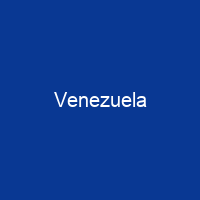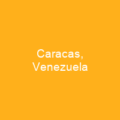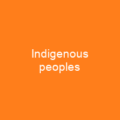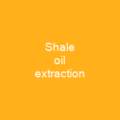Venezuela is a country in northern South America with a rich history and diverse landscape. It covers an area of 916,445 km² and has a population of around 29 million people as of 2022. The capital city is Caracas, and the official name has changed several times since its independence in 1830. Venezuela’s history is marked by political turmoil, economic collapse, and social challenges.
Geography and Climate
Venezuela’s geography includes coastal mountain ranges, plains, and highlands. The country borders Colombia to the west, Guyana to the east, and Brazil to the south. It also has a significant coastline on the Caribbean Sea. Venezuela’s climate varies from tropical in the lowlands to temperate in the higher elevations.
Topographical Regions
The northern mountains are part of the Andes range, with Pico Bolívar being the highest point at 4,979 m. The Guiana Highlands contain tepuis and form part of the Amazon Basin. The central region is characterized by the llanos, vast plains stretching from the Colombian border to the Orinoco River delta.
History
Venezuela was colonized by Spain in 1522 and declared independence in 1811. The Bolivarian Revolution led to populist social welfare policies but also saw an increase in poverty during the 2010s. Venezuela has experienced democratic backsliding, high levels of corruption, and economic collapse, leading to a humanitarian crisis with over 7.7 million people fleeing the country by June 2024.
Colonial Period
The Welsers were granted rights to explore and rule Venezuela in the 16th century but faced resistance from native caciques. Indigenous peoples were converted to Roman Catholicism, and early colonial settlements focused on the northern coast before expanding inland along the Orinoco River.
Demographics
Venezuela’s population is predominantly of mixed ethnic ancestry, with significant Indigenous, African, and European influences. The majority of the population lives in urban areas, particularly in the north. The country has a diverse linguistic landscape, with Spanish as the official language and over 30 recognized Indigenous languages.
Economy
Venezuela’s economy is heavily dependent on oil exports, which have been crucial for government revenues. However, the oil industry has faced challenges, including nationalization efforts and economic sanctions. The country has experienced severe economic crises, leading to hyperinflation, shortages of basic goods, and a significant refugee crisis.
Oil Industry
The discovery of oil deposits in Lake Maracaibo during World War I transformed Venezuela’s economy. PDVSA, the state-owned oil company, plays a critical role in the national economy but has faced challenges due to mismanagement and political interference.
Culture and Society
Venezuela’s culture is a blend of Indigenous, African, and Spanish influences, reflected in its music, art, and literature. The country hosts various international sports events and has produced notable athletes and musicians. Despite the economic crisis, Venezuela continues to celebrate its rich cultural heritage.
Education and Health
The national health care system is universal but faces challenges due to the economic crisis. Literacy rates are high, but many Venezuelans seek education abroad. The country has a diverse religious landscape, with Christianity being the predominant religion.

Venezuela’s journey from a prosperous nation to one facing severe economic and social challenges is a complex story. The country’s rich cultural heritage, diverse landscape, and historical struggles continue to shape its identity today.
You want to know more about Venezuela?
This page is based on the article Venezuela published in Wikipedia (retrieved on February 27, 2025) and was automatically summarized using artificial intelligence.







